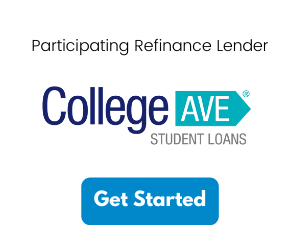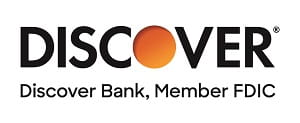When it comes to paying off student loans, it can take anywhere from 10 to 25 years. The time it takes depends on several factors: the type of loan you have, the amount you borrowed, the interest rate, the repayment plan you chose, and any grace periods, deferments, or forbearances you use.
Student loans are available as federal student loans and private student loans. Each may have different interest rates and repayment plans that can affect the length of your loan and how much you can expect to pay each month.
Repaying Federal Student Loans
The federal student loan program is backed by the U.S. Department of Education and offers federal student loans to undergraduate and graduate students, and parents of dependent undergraduate students. The federal government offers different types of loans, along with Direct Subsidized and Unsubsidized loans based on your need and financial circumstances.
Traditional Repayment Plans for Federal Student LoansThese traditional repayment plans are based on the principal balance of your loan (the amount of money you borrowed for your education). These plans do not consider your discretionary income or family size when determining how much your monthly payment will be.
- Standard Repayment Plan
Standard repayment plans are comprised of 120 equal monthly payments spread over 10 years to repay your student loan. Your monthly payment is dependent on the total loan amount you borrowed, but the minimum monthly payment is $50.
- Graduated Repayment Plan
In a graduated repayment plan, your initial monthly student loan payments begin low and gradually increases over the course of your repayment term. Graduated repayment plans are available to Direct Loans or FFEL program loans. With a minimum loan payment amount of $25/month, your monthly payment will increase every two years and no payment will be more than three times any other payment.
- Extended Repayment Plan
With a fixed monthly payment amount, the extended repayment plan has a longer repayment term of up to 25 years. You may have a lower monthly payment, but your longer repayment terms will keep the loan balance higher for longer. This can make extended repayment cost more than the standard repayment plan. You also must have at least $30,000 in either a FFELP or Direct Loan, have must have started borrowing after October 7, 1998, or must have not outstanding balance on a loan before taking out a loan after October 7, 1998.
Federal Student Loan Repayment Plans Based on Income
Income-Driven Repayment (IDR) Plans
Federal Direct Loans have IDRs that are based on your discretionary income, family size, and state where you live. For many, and IDR plan can reduce a borrower’s monthly payment when compared to a 10-year Standard Repayment Plan, how that may not be the case for every borrower. And IDR may be a smaller monthly payment, but you will be making that monthly repayment for either 20 or 25 years, depending on the plan you choose. After making your required payments under your IDR plan, any outstanding balance will be forgiven. FFEL loans are not eligible for IDR and the option for repayment of FFEL loans based on income is the Income Based Repayment plan.
Income-Based Repayment (IBR) PlansAvailable to certain FFEL and Direct Loans, this monthly repayment plan is equal to 15% (or 10% if you are a new borrower) of your discretionary income divided by 12. Your monthly payments are capped at the standard 10-year payment amount. After 25 years or 300 payments, any outstanding loan balance will be forgiven.
Not available for
- Direct PLUS Loans made to parents
- Direct Consolidation Loans that repaid PLUS loans made to parents
- FFEL PLUS Loans made to parents
- FFEL Consolidation Loans that repaid PLUS loans made to parents
Income-Contingent Repayment (ICR) Plans
For ICR plans, your monthly payment is the lesser of the following:
- What you would pay on a repayment plan that is adjusted based on your income with a fixed monthly payment over 12 years, or
- 20% of your discretionary income divided by 12
Parent PLUS loans borrowers cannot be repaid under any income-driven repayment plans, but parent borrowers can consolidate Direct or Federal PLUS loans into a Direct Consolidation Loan and then repay the new loan under the ICR plan.
More >>> Compare Repayment Plan Options: Standard, Graduated, Extended, IDR
Repaying Private Student Loans
Like federal student loans, private student loans may have different repayment options to choose from, though you will typically have chosen your repayment option at the time you borrow the loan. While you are in school, you can opt to have your private student loan immediately enter repayment, meaning you begin repaying the principal and interest on the loan during your time in school. Assuming you can afford this repayment option, you will end up paying off your loan quickly. This will allow you to save money on interest.
Interest-Only Payments
A common way to tackle repaying private student loans is to make payments on the interest. This will not make a dent in the principal balance, but you will avoid adding unpaid interest on top of what you borrowed.
Flat or Partial Payments
It needs to be noted that anything less than a regular monthly payment of principal and interest is not going to reduce your actual loan balance. Partial payments can help you stay current with the accumulated interest and keep from having too much interest added to the principal balance when you begin repayment.
Most private student loans enter repayment upon graduation and while some private student loan lenders may offer a grace period, it, if any, may vary by lender. If you are so fortunate to receive a grace period, you are encouraged to build a stable financial foundation with employment, a regular salary, and possible relocation during this time. When you grace period ends, your lender will most likely place your loan on a standard repayment plan, depending on the terms you agreed to when you borrowed the loan.
MORE>>>Repayment Plans for Private Student Loans
If you are already in the process of repaying your loan, you may not have as much flexibility to switch repayment plans to help manage your monthly payments. Generally, if you are having trouble repaying your loan you need to contact your lender immediately to discuss the situation. Your lender may be able to approve a deferment of loan payments if you are facing economic hardship.
No matter what payment plan you have, it is beneficial to understand what options are available to you. Communicate with your loan servicer to ensure you understand the loan terms and conditions. Talk to others who have graduated in your intended field for an idea of what kind of income you can reasonably expect. With healthy expectations in place, you can work to be a responsible borrower and choose a repayment plan that will work for you.
Student Loan Refinancing
Like other kinds of debt, borrowers can refinance student loans to take advantage of lower interest rates, different terms of repayment, or other terms and conditions that may alleviate your debt burden. It is important to note that if you have federal student loans, you may not want to refinance with a private lender as you could lose access to benefits that are only available to federal student loans.
When shopping around for refinancing your private student loans, carefully understand what lenders will expect from you. Refinancing means you are applying for a new loan, so lenders want to be reassured that you are qualified to borrow their money. You may be asked to provide the following information to meet their qualifications:
- A good credit score and credit history (typically a credit score needs to be above 670)
- Debt-to-income ratio
- The duration of current employment (lenders are usually looking for two years of employment history)
- Your payment history on existing loans and debt
More on How to Refinance Student Loans










